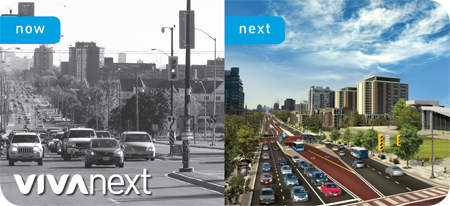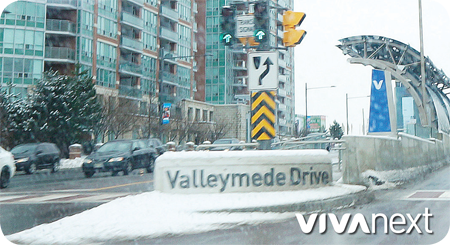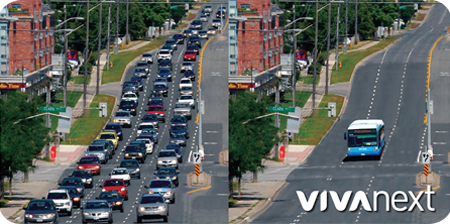John Steinbeck – “What good is the warmth of summer, without the cold of winter to give it sweetness.” Such words have never been truer than this past winter. The Greater Toronto Area recorded the coldest winter in 20 years; there have been at least 10 days of temperature that dipped below -20 C, which hasn’t happened in seven years and this has been the longest winter on record in over 100 years! With the official arrival of spring, vivaNext is preparing to ramp up our construction and road work.
Last year, we had some great milestones with the opening of 3.9 kilometres of rapidway on Highway 7 from Bayview Avenue to Highway 404. The Toronto-York Spadina Subway Extension [TYSSE] project celebrated a major milestone at the end of last year, with the tunnel boring machines [TBMs] “Yorkie” and “Torkie” finished their tunneling journey north to Vaughan Metropolitan Centre [VMC] station. Ongoing utility relocation on Highway 7 West, as well as CN Bridge work. On Davis Drive, nearly all retaining walls have been constructed, the eastern creek culvert has been replaced and extended, and the majority of hydro poles have been relocated. Road widening and base-layer paving has started, while reconstruction of Keith Bridge and the extension of the western creek bridge on the north side continue.
Building on the progress and advancing the BRT project, we’ll continue to relocate utilities, construct retaining walls, widen roads and pave along the different corridors, not to mention finishing the new viva stations on Highway 7 in Markham. With the longer days and bright sunshine, comes a lot more activity in the construction zones so please drive carefully and be alert to workers in the area. We know construction can be daunting and we thank you for your patience and understanding. Please drive with care and give yourself extra time to get to your destination safely.
To find out what is happening this spring, follow us on Twitter and like us on Facebook. You can also sign up for email notices at vivanext.com to keep you updated on the construction underway in your area.










